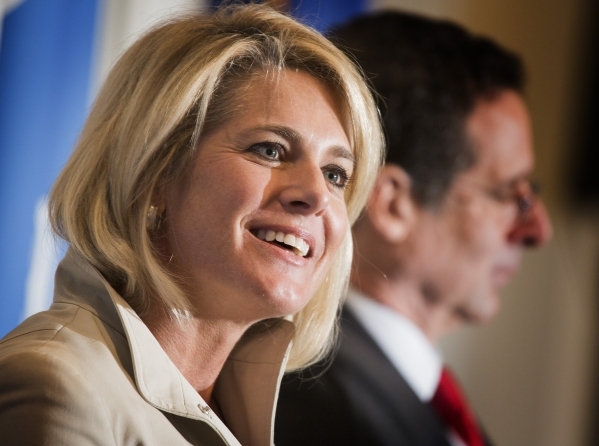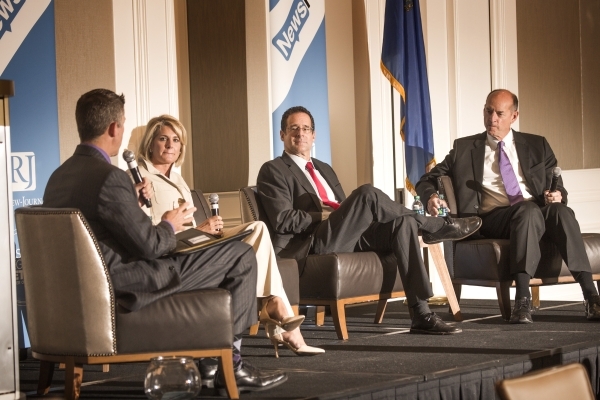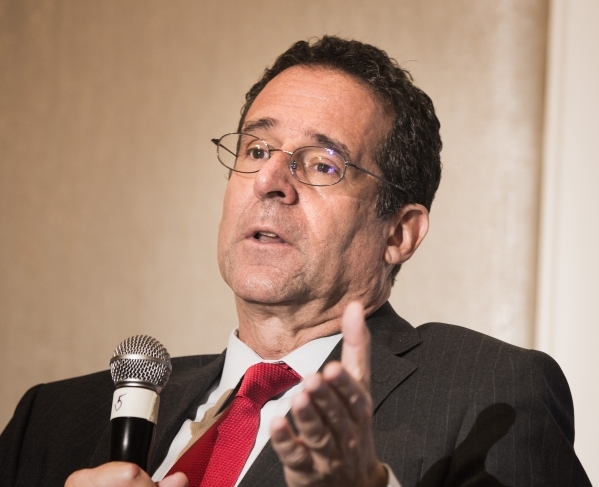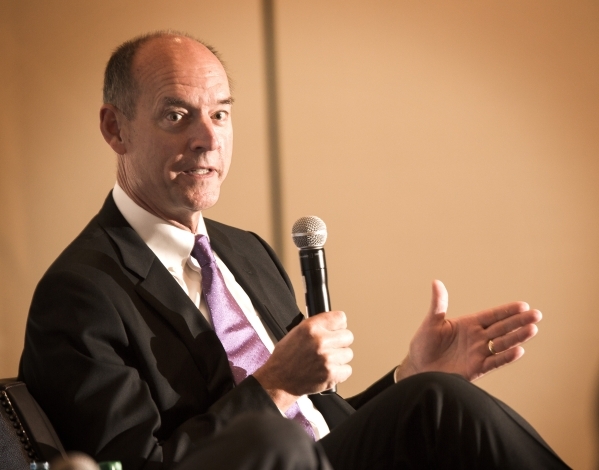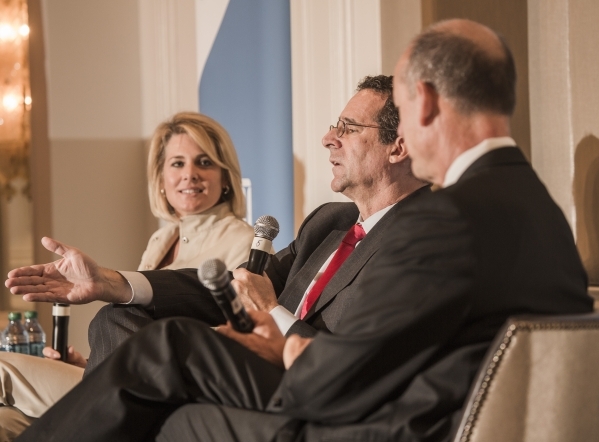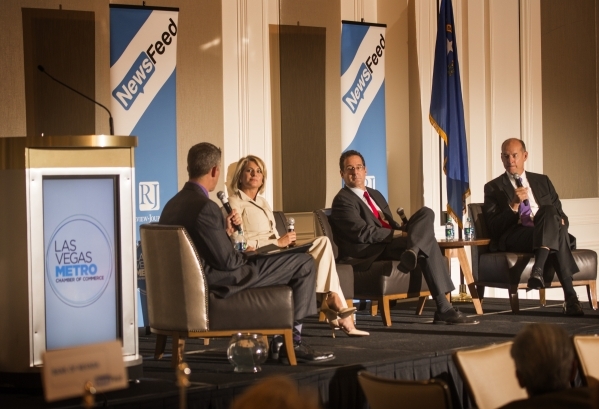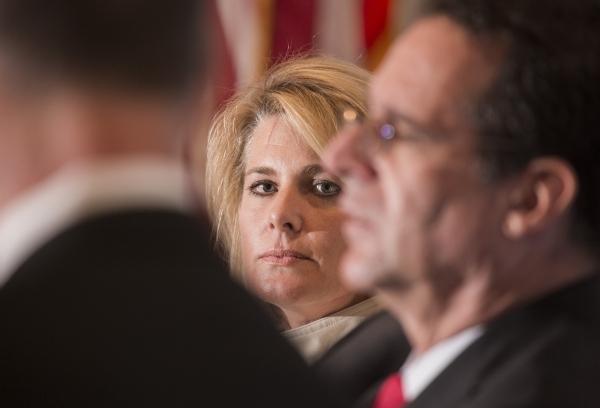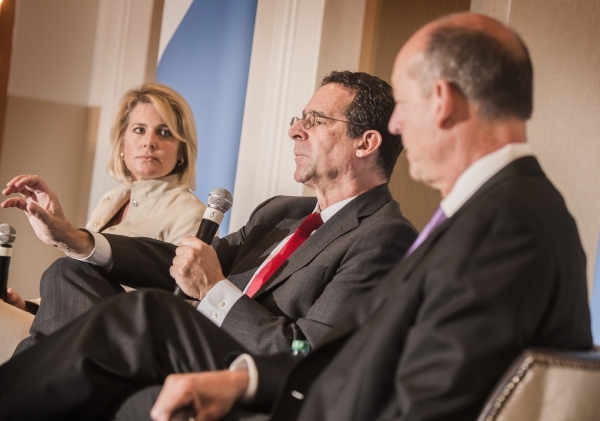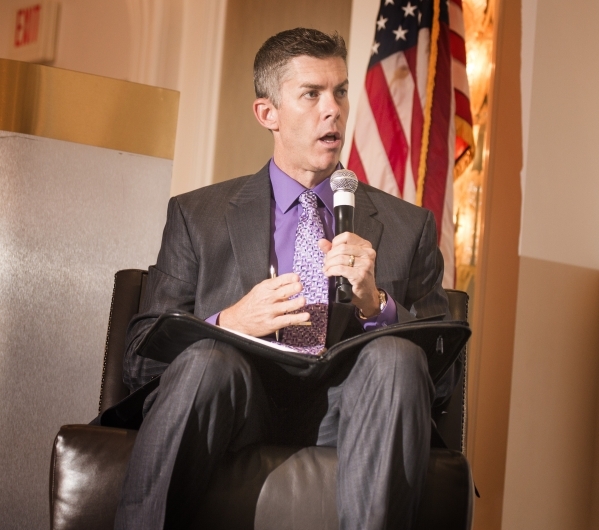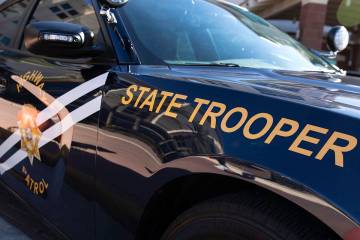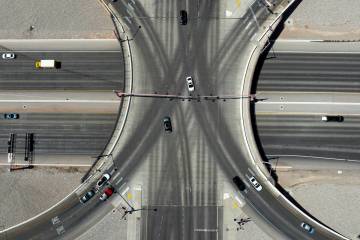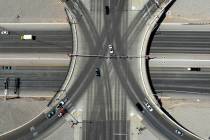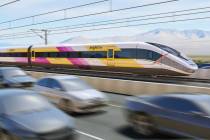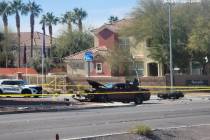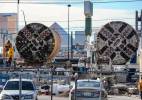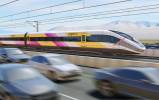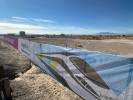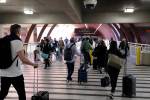Transportation leaders talk light rail at Newsfeed session
Three transportation leaders say light rail should be a part of Southern Nevada's future, but it would only happen if the community is willing to raise sales taxes or a favorable public-private partnership could be established.
Robert Lang, executive director of Brookings Mountain West and a professor of urban affairs at the University of Nevada, Las Vegas, said the permanence of a light-rail route has led to economic investment in other cities where rail lines have been built and extended.
He and two other transportation leaders made their remarks in a program on Las Vegas transit and infrastructure, sponsored by the Las Vegas Metro Chamber of Commerce and the Las Vegas Review-Journal Tuesday at the Four Seasons.
Light rail is being considered as part of the long-term solution for moving heavy volumes of tourist traffic and Strip employee commuters in the future. Planners concur that the best route to serve tourists and commuters is down the center of Las Vegas Boulevard, but the biggest questions facing such a project would be the cost and whether the route would be at grade, above grade or below grade. The price tag would range from $75 million a mile to $750 million a mile, depending on whether the system would run above or below the ground.
Transportation planners are expected to explore each of the alternatives before making a recommendation. Las Vegas is the largest metropolitan area without light rail, Lang said.
Lang said the assuredness of a route being in place as opposed to bus routes that could easily be changed is what drives business to invest in residential, office or retail development along a route and especially near stations.
Denver has experienced a development renaissance along its light-rail route and Phoenix has seen a return on investment of $7 billion along its route after estimating it would get a return of $3 billion.
Addressing transportation is important to Southern Nevada's future as a convention host. Lang said several convention destinations, most notably Orlando, are taking aim at Las Vegas and using transportation solutions to fix their shortcomings.
Orlando is building a 13.7-mile, $400 million maglev line from Orlando International Airport to the city's convention complex to offset Las Vegas' advantageous easy access from McCarran International to the resort corridor and convention facilities.
David Knowles, northwest transit lead for the engineering company CH2M, said the Las Vegas Monorail system is expected to explore extending the system's route to connect the city's three major convention centers. That would mean building a station near the Sands Exposition Center and extending the existing 4-mile route south to the Mandalay Bay Convention Center to provide what eventually could be 9 million square feet of exhibit space when the Las Vegas Convention Center expansion is completed.
Gone are the days when federal grant programs pay for the bulk of urban mass transit systems, added Tina Quigley, general manager of the Regional Transportation Commission of Southern Nevada. While Southern Nevada transportation planners would pursue grants, program administrators look more favorably at projects that are bonded against sales tax revenue from increases approved by voters. Phoenix recently approved a 0.007-cent sales tax increase for a light-rail extension.
A short-term solution to some transportation problems around the Strip would be the removal of "superblocks" — barriers that block potential through streets, such as Harmon Avenue west of the Strip, the panel agreed.
Follow @RickVelotta on Twitter. Contact reporter Richard N. Velotta at rvelotta@reviewjournal.com or 702-477-3893.



